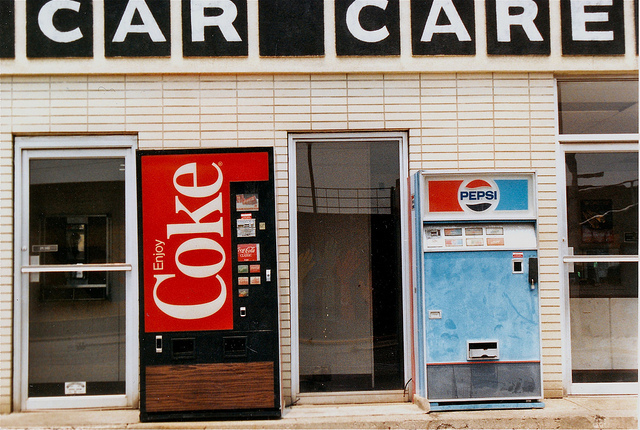Content Strategy
Brand Positioning Strategy for the Modern Marketer: How Brands Use Consumer Psychology Today
By Jonathan Crowl on December 20, 2017
Most marketers are familiar with the concept of brand positioning, and if you haven't read the formative consumer psychology book, Positioning: The Battle for Your Mind by Al Ries and Jack Trout, you've probably at least heard about it, or you've listened to lectures or read strategy articles based on its teachings.
Since it was published in 1980, the marketing world has been turned upside down. Marketers in those days couldn't have imagined how the Internet, social media, streaming video, and virtual reality would create new opportunities and challenges for their industry, much less how these channels would affect their brand positioning strategy.
What's remarkable is that, in spite of all the change sweeping the marketing landscape, the core principles of this book's argument remain intact. As its authors argue, the mind of the consumer conceives of products and services as categories: You go shopping for running shoes first, and choose the brand from the options in that category. And within these categories, there is an unscientific ranking of these brands: You value Nike more than Adidas, or vice versa.
Brands are always vying to rank at the top of that ladder, making a lasting impression on consumer psychology. These principles hold true for B2B brands: Salesforce wants you think of its name first when you're looking for a CRM solution.
Digital channels haven't necessarily changed the way we think about brand positioning. What have changed, though, are the methods we use to target and establish this positioning. Because this is a consumer-centric model for marketing, we're beholden to the shifting sentiments and preferences of consumers, which means that the ideal brand positioning is often a moving target. Some brands have the luxury of premium positioning and a consumer appeal that has brought in consistent business for decades. But most brands periodically need to revisit their positioning and determine whether a revamp of their brand positioning strategy is in order.
When you reach that point, you'll need to pursue this time-honored strategy with the latest and greatest marketing tools and research.
Image attribution: Neven Krcmarek
Successful Strategy Leans on Analytics
In the past, brand positioning was informed to a great degree by market research conducted among a prospective consumer base. The benefits of market research can be invaluable as you make tough decisions that affect the value of a company, such as testing the company's brand name and logo, identifying customer needs, and identifying category leaders and what unique advantages your company holds against them.
Market research still has a place in modern marketing strategy, but it's only part of the data used to inform these big decisions. Brands should also lean heavily on analytics tools to generate insights via digital engagement, social listening, and other data channels offering insight into your brand's performance. The keywords consumers use can be one example: Are they using search terms related to discounts, or related to quality, or to environmental friendliness? If they're finding your business through a specific search query, it likely means that you're already doing some of the SEO work to establish that relevant brand position, but it nonetheless illustrates a perceived value of your company, especially if those search referrals yield a high conversion rate.
Social listening could identify common keywords used in brand-positive social content, providing some insight into the ways consumers are finding value in your brand. You can use demographic information to figure out how these responses vary among different groups.
But this same social listening activity can also be used to monitor your competitors. By tracking how consumers think of your market competition in relation to your own brand, you can assess your position on the category ladder and identify ways you might reposition your brand to climb higher. A similar approach can be taken with SEO: Less competitive keywords are not just an affordable marketing opportunity but may also signal a brand position that has been underutilized in your category.
Data will be the backbone of your new brand position. But this data will be heavily influenced by emerging consumer trends that can be seen with the naked eye.
Trends Shaping Successful Brand Positions
Brand positions come in many different forms. Sometimes it's a soft drink offering its original, popular taste with lower calories. Or a company might lean on its long track record as an outdoor apparel provider to build authenticity for its products. Since the 1950s, Dove has chosen to position its soap as a "beauty bar," establishing that its brand position is not just about cleanliness but beauty.
Sometimes these trends are dominated by larger cultural movements. According to Marketing Week, today's consumers are in the midst of a years-long shift toward brands that advocate a larger social purpose. They want brands that position themselves as contributing to the world. What's the benefit of being a consumer of these brands? By buying their products, you also help make the world a better place.
Image attribution: DrBob317
Marketing Week argues that this trend is shaping the top positioning play for brands in 2018. Brands can stake a claim to a strong, appealing brand position by identifying a brand purpose that aligns with their specific category. For a clothing brand, this might mean emphasizing fair-trade materials, eco-conscious manufacturing processes, or fair living wages paid to its factory workers. A food brand might emphasize its support for local farmers and organic, non-GMO ingredients.
These positions can be tricky because the purpose must align with the company's industry. Marketing Week is critical of Heineken positioning its brand around the beer helping bring together people of different cultures and political viewpoints. The columnist argues that the problem isn't with the sentiment of the position, it just was too generic to be exclusive to Heineken: Any other brand could swoop in and stake the same claim, eliminating their competitive advantage.
According to the Harvard Business Review, there are four general areas where brands can establish their social purpose and build a brand position around this calling. These categories include:
- Generating resources (donating profits to charities, or sending shoes overseas to needy communities, as in the case of the shoe brand TOMS)
- Providing positive alternatives (the ability to purchase energy from solar instead of fossil-fuel supplies)
- Shifting cultural mindsets (brands embracing the LGBTQ movement and featuring these lifestyles in their advertising)
- Improving the conditions of the less fortunate (supporting community centers in disadvantaged areas, providing clean water to residents of developing countries)
A successful brand position in 2018 will identify the location where its business intersects with one of these purposes. This likely represents a strong brand position that can elevate a company on its category ladder.
Once that position is cemented in the minds of consumers, it becomes a powerful asset for brands. As Positioning argues, consumers grow stubborn once they've come to a conclusion on a brand's value. "The mind, as a defense against the volume of today's communications, screens and rejects much of the information offered it," according to Ries and Trout. "In general, the mind accepts only that which matches prior knowledge or experience."
A reposition is a chance to wipe the slate clean and build customer relationships from scratch. Make sure the position you choose is one that will resonate with modern-day consumers.
For more stories like this, subscribe to the Content Standard newsletter.
Featured image attribution: Allef Vinicius




